Geology- Relative Age, superposition, inclusions, cross cutting, geologic time scale
1/44
Name | Mastery | Learn | Test | Matching | Spaced |
|---|
No study sessions yet.
45 Terms
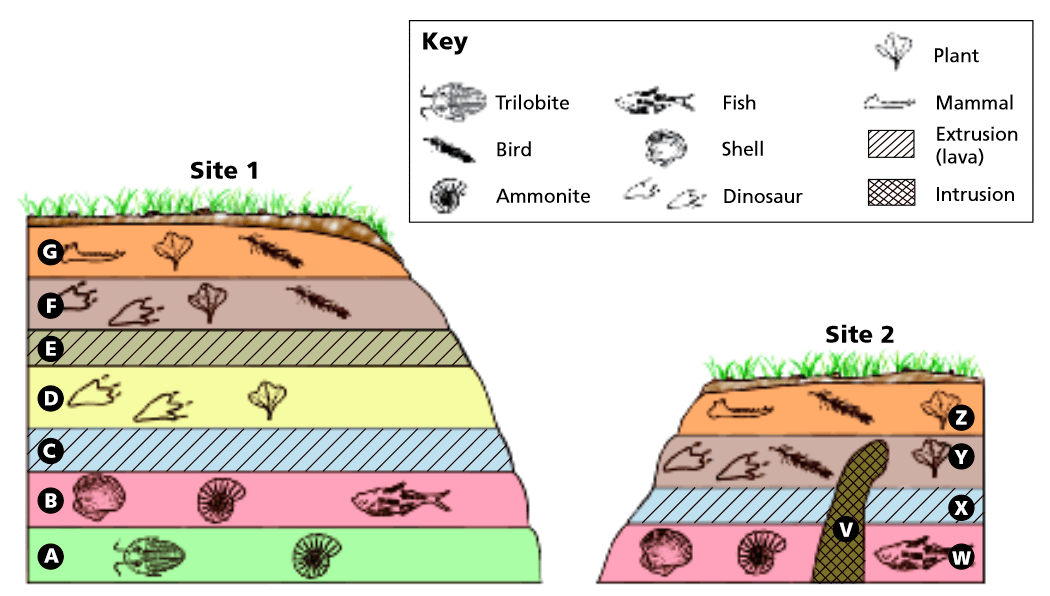
Which layers of rocks are the same absolute age?
B and X
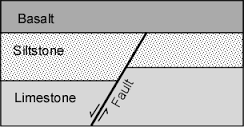
What are the relative ages of the features in order from oldest to youngest?
Limestone, siltstone, fault, basalt
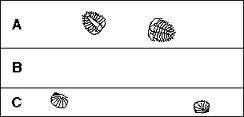
According to the law of superposition, which layer is the youngest?
A
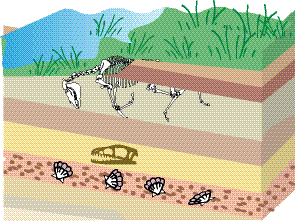
According to the law of superposition, the oldest fossils are found where?
Near the bottom of the rock layers
Fossils are usually found in what kind of rocks?
sedimentary
What is the largest unit of time on the geologic time scale?
Eon
What Eon, Era, Period, and Epoch are you living in today?
Phanerozoic, Cenozoic, Quaternary, Holocene
What are the fractions of time in order from LEAST to GREATEST?
Epoch, Period, Era, Eon
The Earth is believed to be about ___________ years old.
4.6 billion
What is the principle of uniformitarianism?
One of Hutton’s principles
the idea that Earth’s features are always changing and the present is an indication to what happened in the past.
The geologic time scale is a record of…
the history of rock layers and fossils
Paleontologists infer that the Earth is approximately how many years old?
4.6 billion years old
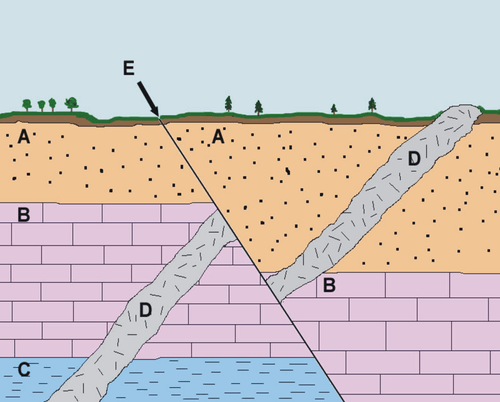
Which rock layer is the oldest?
c
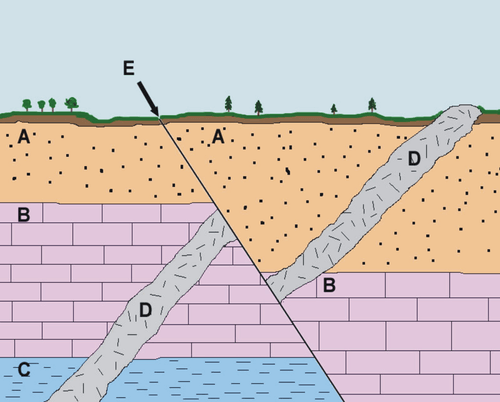
Which rock layer is the youngest?
e
What period are we currently in?
quaternary
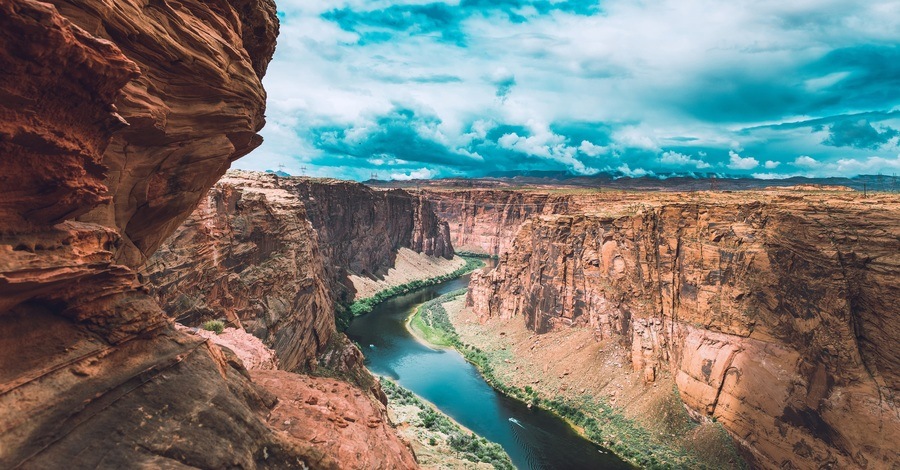
What does this picture represent?
uniformitarianism
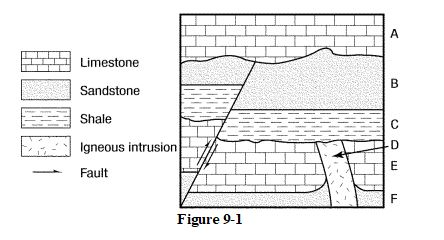
When did the fault in figure 9-1 occur?
between layer b and a
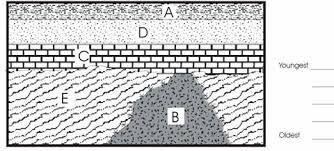
Which of the following correctly lists the layers in order from oldest to youngest?
e, b, c, d, a
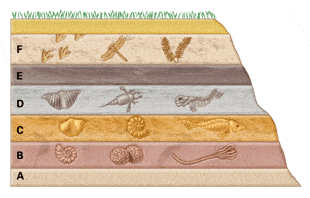
Which layer of sedimentary rock is the oldest?
A
This diagram shows layers of sedimentary rock and examples of the fossils each layer contains. Which layer contains the oldest fossils?
layer 4
Using the geologic time scale, we are in the _________ epoch.
Holocene
What is relative time?
involves placing events in order in which they occurred. In geology it means describing the order or sequence of geologic events.
What is the principle of original horizontality?
One of Steno’s principles
means that sedimentary rocks are deposited in nearly horizontal layers.
What is the principle of superposition?
One of Steno’s principles
means that the rocks at the bottom are the oldest and the ones on top are the youngest.
What is the principle of cross-cutting?
One of Hutton’s principles
means older rocks may be cut by younger rocks
What is the principle of inclusion?
One of Hutton’s principles
when applied it can be used to identify older pieces of rock surrounded by younger igneous rocks
What are invertebrates?
animals that do not have a backbone or a bony internal skeleton
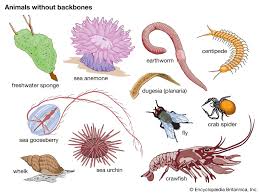
What are vertebrates?
an animal that has a backbone or spinal column, which consists of a series of bones called vertebrae that protect the spinal cord.
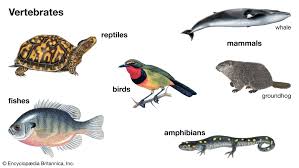
What are index fossils?
a distinctive, abundant, and widespread fossil from an organism that lived for a relatively short period of geologic time, used to determine the relative age of rock layers
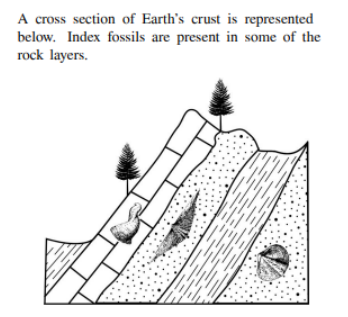
These rock layers indicate evidence of past crustal movement bases on the principle of?
original horizonality
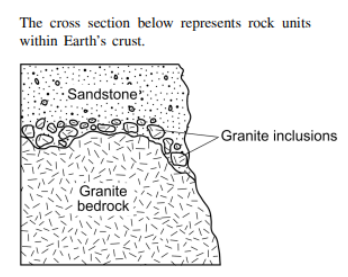
The age of the granite that makes up the inclusions is most likely..
older than the sandstone, but the same age as the granite bedrock
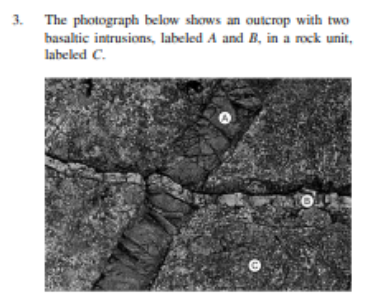
What is the relative age of these three rocks units from oldest to youngest?
C→ A → B
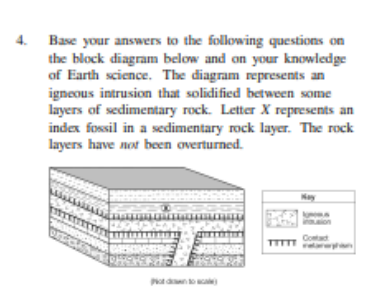
Describe the evidence represented in the diagram that indicates that the shale layer and the limestone layer are older than the igneous intrusion.
both layers have contact metamorphism, the layers were changed by the igneous intrusion
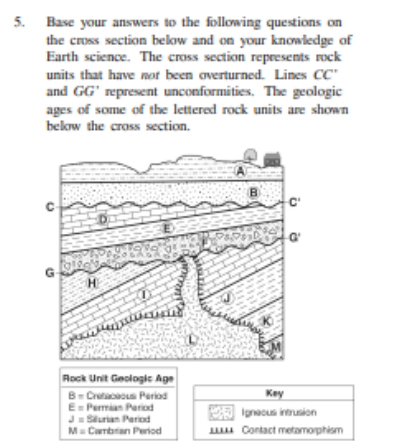
Why is there no contact metamorphism indicated between rock unit L and rock unit F?
Rock unit F was deposited after the intrusion of rock unit L.
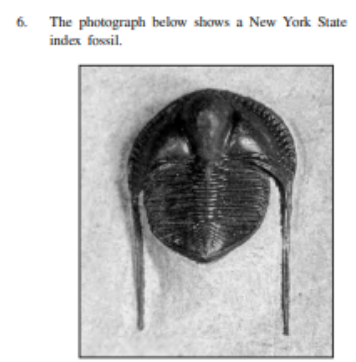
What is the best classification of this fossil, and during which geologic time period did the organism that produced this fossil exist?
Classification: Trilobite
Geologic time period: Ordovician
The existence of which group of organism spans the shortest geologic time?
humans
According to the fossil record, which sequence correctly represents the evolution of life on Earth?
soft-bodied organisms → fish → amphibians → mammals
The mass extinction of the dinosaurs, approximately 65.5 million years ago, is inferred by most scientists to have been caused by
an impact event occurring on Earth’s surface
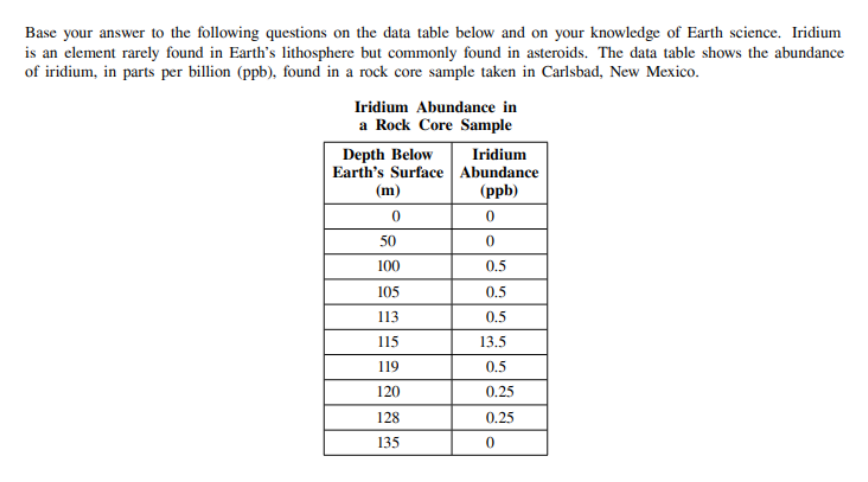
The high concentration of iridium in this rock core sample has been matched to rock layers that have been dated to the geologic time when dinosaur extinction from an asteroid impact may have occurred. Between which two geologic time periods did this inferred extinction occur?
Cretaceous Period and Tertiary Period
It is inferred that during the early Archean Era the atmosphere of Earth contained water vapor, carbon dioxide, nitrogen, and other gases in small amounts. These gases probably came from
volcanic eruptions
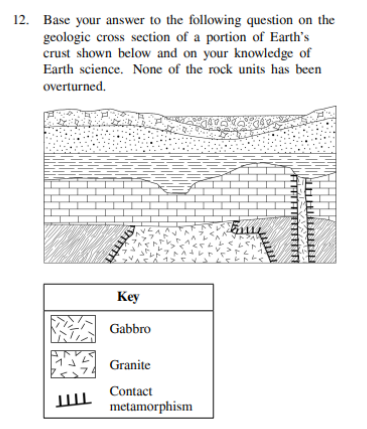
Which process most probably produced the irregularly shaped boundary between the limestone and the shale?
erosion
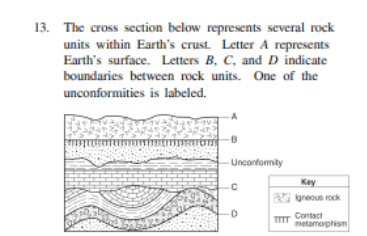
Which letter boundary is most likely another unconformity?
C
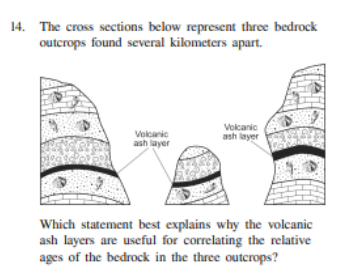
Which statement best explains why the volcanic ash layers are useful for correlating the relative ages of the bedrock in the three outcrops?
The ash was deposited over a large area when a volcano erupted
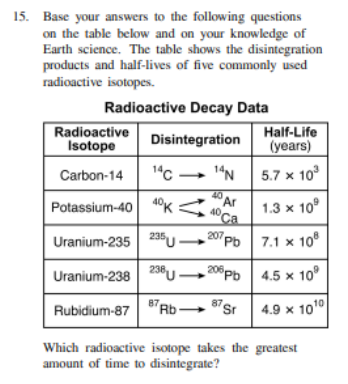
Which radioactive isotope takes the greatest amount of time to disintegrate?
rubidium-87
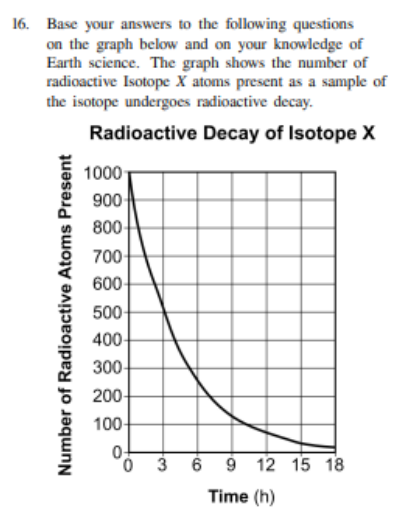
Based on the graph, what is the approximate number of radioactive atoms of Isotope X that are present when 8 hours of decay has occurred?
155